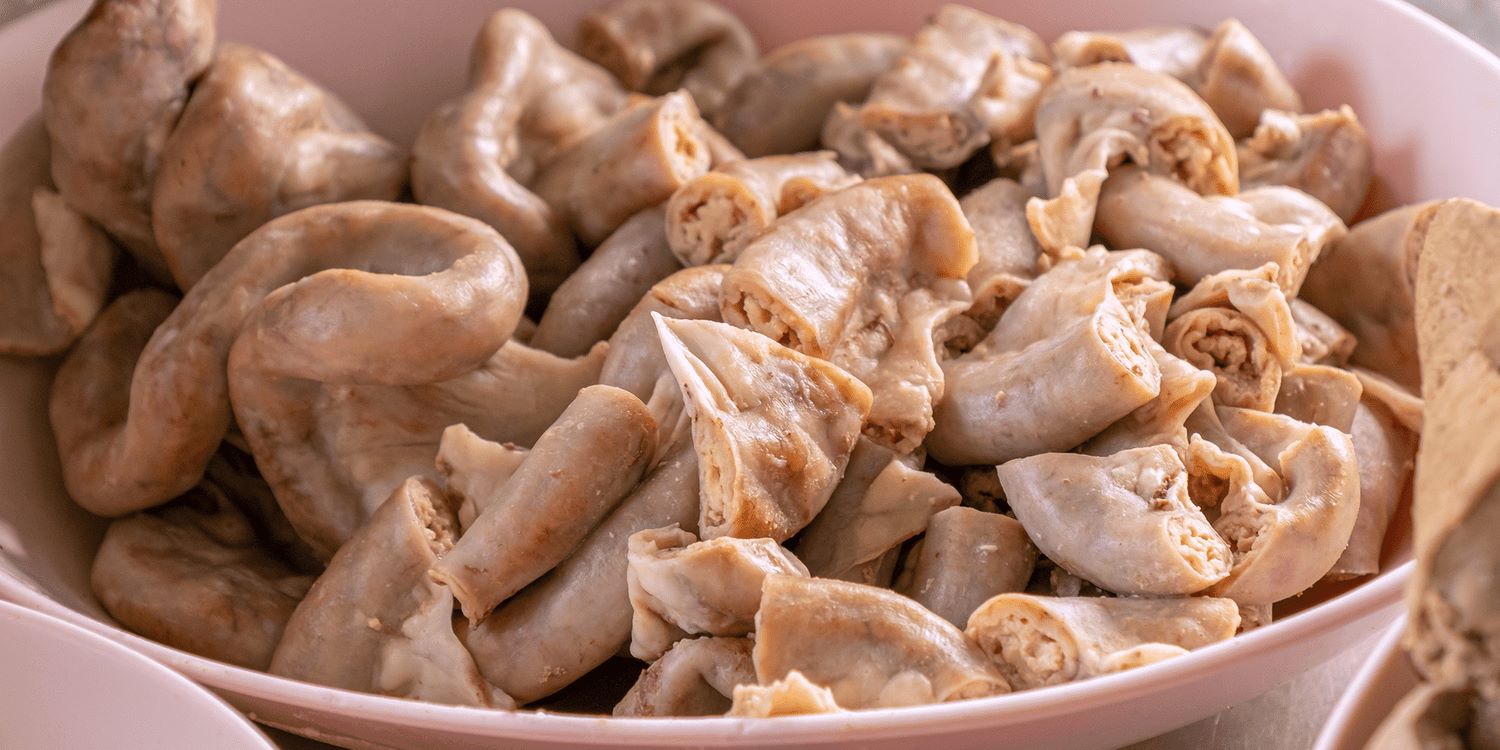
Chitterlings, also known as chitlins, are a beloved delicacy in Southern cuisine. These small intestines of pigs have a rich history and unique flavor that make them a standout dish for many food enthusiasts. While chitterlings are often praised for their taste, it’s important to also consider their nutritional value. In this article, we will delve into the nutrition facts of chitterlings, highlighting the key nutrients they provide and their potential health benefits. Whether you’re a chitterlings aficionado or simply curious about this traditional Southern dish, understanding its nutritional profile will give you a better appreciation for this unique culinary experience.
Key Takeaways:
- Chitterlings are a good source of protein, iron, and essential vitamins, but they are high in cholesterol and purines, so moderation is key for individuals with certain health conditions.
- Chitterlings contain important nutrients like collagen, omega-3 fatty acids, and selenium, but they are also high in cholesterol and purines, so they should be consumed in moderation for a balanced diet.
High in Protein
Chitterlings, also known as pork intestines, are a rich source of protein. A 100-gram serving of chitterlings contains approximately 14 grams of protein, making it an excellent choice for individuals looking to meet their protein requirements.
Rich in Vitamins and Minerals
Chitterlings are packed with essential vitamins and minerals such as iron, zinc, and vitamin BThese nutrients play a vital role in maintaining overall health and supporting various bodily functions.
Low in Fat
Contrary to popular belief, chitterlings are relatively low in fat. A 100-gram serving typically contains around 6 grams of fat, making it a reasonable choice for those watching their fat intake.
High in Cholesterol
Chitterlings do contain a significant amount of cholesterol. A 100-gram serving can have up to 150 milligrams of cholesterol, so individuals with high cholesterol levels should consume them in moderation.
Good Source of Iron
Iron is essential for the production of red blood cells and overall oxygen transportation in the body. Chitterlings provide a good amount of iron, contributing to the recommended daily intake of this important mineral.
Contains Zinc
Zinc is a crucial mineral that supports the immune system, promotes wound healing, and aids in the body’s utilization of carbohydrates, fats, and proteins. Chitterlings offer a decent amount of zinc, helping to meet your daily requirements.
High in Vitamin B12
Vitamin B12 plays a vital role in maintaining healthy nerve cells and red blood cells, as well as in the production of DNA. Chitterlings are a good source of vitamin B12, making them beneficial for individuals following a vegetarian or vegan diet.
Rich in Selenium
Selenium is an essential trace mineral known for its antioxidant properties. Chitterlings contain selenium, which helps protect the body against oxidative stress and supports a healthy immune system.
Contains Collagen
Chitterlings are abundant in collagen, a protein that plays a crucial role in maintaining the health and elasticity of our skin, joints, and connective tissues.
High in Purines
Purines are compounds that can be broken down into uric acid. Chitterlings contain high levels of purines, so individuals with gout or kidney problems should consume them in moderation.
Source of Omega-3 Fatty Acids
Chitterlings contain small amounts of omega-3 fatty acids, which are beneficial for heart health and may help reduce inflammation in the body.
Conclusion
In conclusion, it is important to know the nutrition facts about chitterlings to make informed dietary choices. Chitterlings, also known as chitlins, are a popular dish made from the small intestines of pigs. Although they are rich in flavor and enjoyed by many, they may not be the healthiest option due to their high fat and cholesterol content.However, chitterlings are also a good source of protein and contain essential nutrients like iron and vitamin B12. If you choose to include chitterlings in your diet, it is crucial to consume them in moderation and balance them with other nutritious foods. Additionally, proper cleaning and cooking techniques are vital to ensure food safety.Remember, maintaining a well-rounded and varied diet is the key to achieving optimal health. So, whether you enjoy chitterlings occasionally or not at all, be sure to prioritize a diverse range of nutrient-dense foods to meet your dietary needs.
FAQs
1. How many calories are in chitterlings?
Chitterlings are fairly high in calories, with approximately 230 calories per 100-gram serving.
2. Are chitterlings a good source of protein?
Yes, chitterlings are a good source of protein. A 100-gram serving typically provides around 23 grams of protein.
3. Are chitterlings high in fat?
Yes, chitterlings are high in fat, especially saturated fat. It is recommended to consume them in moderation due to their potential impact on heart health.
4. Do chitterlings contain cholesterol?
Yes, chitterlings contain cholesterol. A 100-gram serving can have approximately 180 milligrams of cholesterol.
5. Are there any nutritional benefits to eating chitterlings?
Chitterlings do have some nutritional benefits. They are a good source of iron, vitamin B12, and other essential nutrients.
Was this page helpful?
Our commitment to delivering trustworthy and engaging content is at the heart of what we do. Each fact on our site is contributed by real users like you, bringing a wealth of diverse insights and information. To ensure the highest standards of accuracy and reliability, our dedicated editors meticulously review each submission. This process guarantees that the facts we share are not only fascinating but also credible. Trust in our commitment to quality and authenticity as you explore and learn with us.
